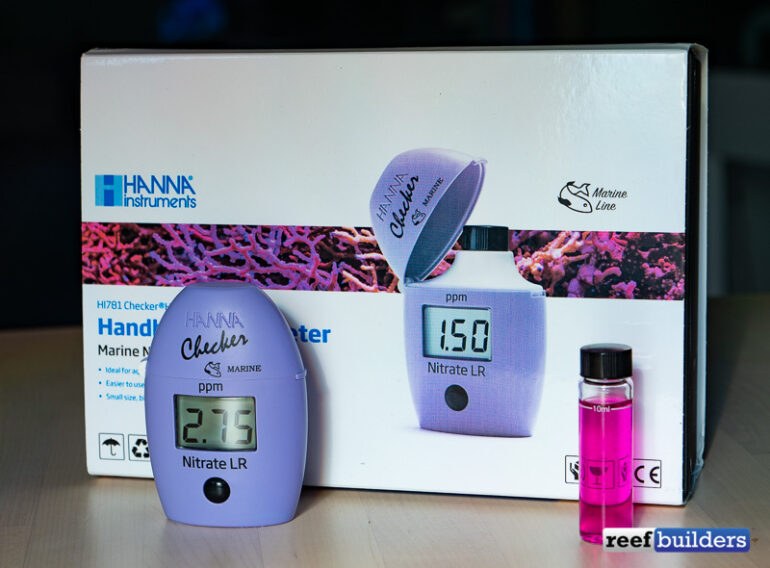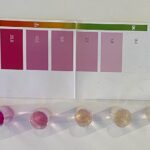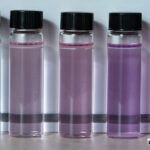The Hanna Nitrate Checker is a brand new water testing kit which takes a very different approach to measuring nitrate compared to what is currently available in the aquarium hobby. This low range colorimeter is specially designed to measure NO3 in saltwater samples up to only 5mg/l, but within this range it provides a much higher resolution and accuracy compared to anything else currently available to saltwater hobbyists.
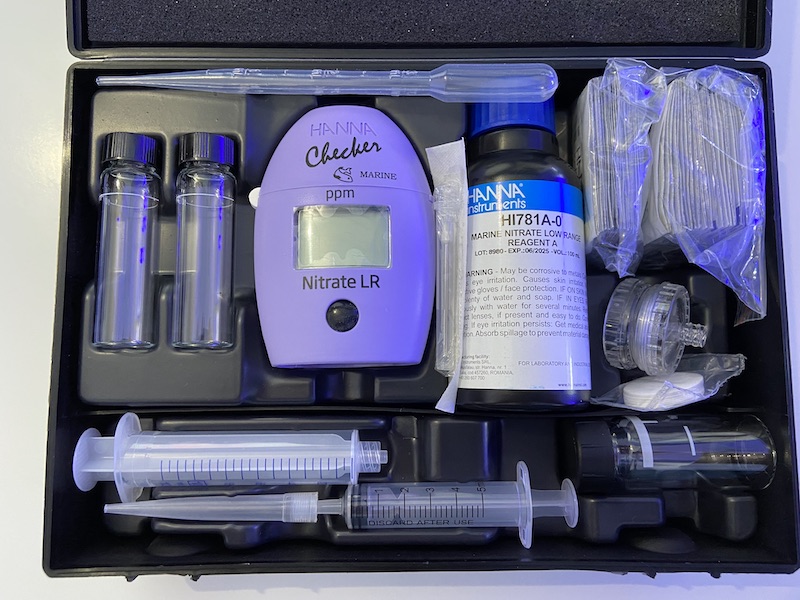
Whereas a typical aquarium nitrate test typically costs around $20 and measure NO3 from zero to 50 o 100 parts per million, it is extremely hard if not trustworthy to try and evaluate the color change from zero to one to two to five parts per million. The best range of ‘results’ you can expect from hobby nitrate test kits falls under a few categories including ‘there is NO nitrate’, ‘there is SOME nitrate’, ‘nitrate is SAFE but a little high’ or ‘Nitrates are WAY too high’.
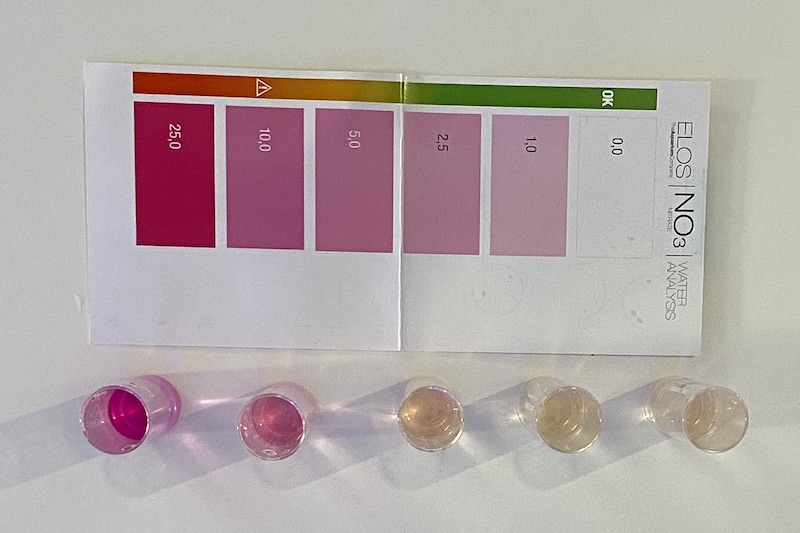 By many accounts this is actually fine for everyday analysis of aquarium chemistry, but it doesn’t do anything for higher energy reef tanks where nitrate is quickly consumed by the corals and ecosystem. While a standard range test kit such as the Elos might cover a broad range and be very easy to perform a handful of tests within just a few minutes, for more accuracy the Hanna Nitrate Checker offers users a closer look at nitrate concentration especially as the value starts approaching zero.
By many accounts this is actually fine for everyday analysis of aquarium chemistry, but it doesn’t do anything for higher energy reef tanks where nitrate is quickly consumed by the corals and ecosystem. While a standard range test kit such as the Elos might cover a broad range and be very easy to perform a handful of tests within just a few minutes, for more accuracy the Hanna Nitrate Checker offers users a closer look at nitrate concentration especially as the value starts approaching zero.
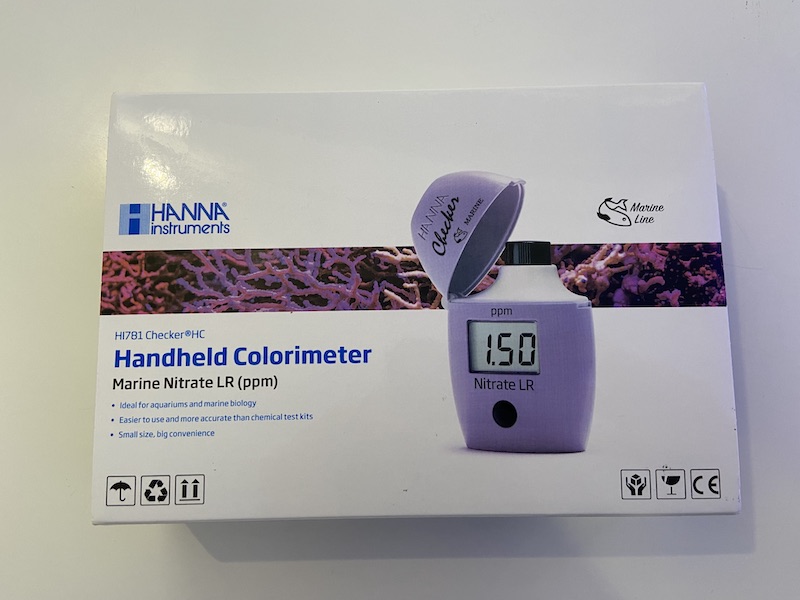 If you’re familiar with the Hanna Checkers, the box itself and the contents inside will be pretty familiar but there’s quite a lot of extra parts, and some new steps that we haven’t seen in the range. The most different new step in performing water analysis with the Hanna Nitrate Checker is pushing the reacted sample through a filtration chamber after mixing first two reagents to remove all the particulates.
If you’re familiar with the Hanna Checkers, the box itself and the contents inside will be pretty familiar but there’s quite a lot of extra parts, and some new steps that we haven’t seen in the range. The most different new step in performing water analysis with the Hanna Nitrate Checker is pushing the reacted sample through a filtration chamber after mixing first two reagents to remove all the particulates.
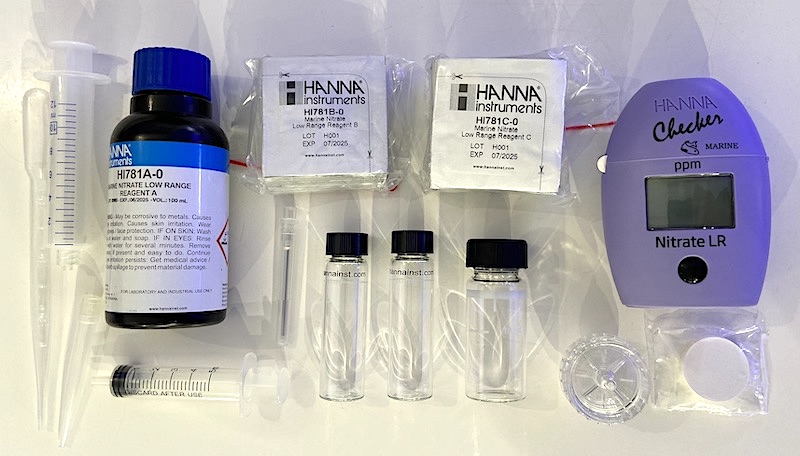
We won’t sugar coat it; performing our very first test with the Hanna Nitrate Checker took around 45 minutes including reading the directions thoroughly, misaligning the filter pad in the housing and making a mess, then starting over due to a mistake. At times like these we wondered why we were even bothering to go through all this effort to measure nitrates that we already knew were ‘fine’, but after getting past the short learning curve we were able to get the entire test down to 10 minutes total per sample, plus the obligatory eight minute wait for the Nitrate Checker to perform its reading.
We measured the nitrate using our go-to Elos nitrate test kit on five tanks, estimated the value corresponding with the color on the chart, then repeated the test much more methodically with the Hanna Nitrate Checker to evaluate how they compare. The three coral reef displays and systems that registered essentially zero nitrate according to the Elos test came out at 0.0, 0.07, & 0.17mg/l – minuscule values but still informative to know that I really ought to be feeding these tanks a lot more food to fuel coral growth.
But what was more surprising is that the higher nitrate samples had much more discrepancy with the saltwater fish system measuring around 5mg/l using the Elos test, but 13mg/l with the Hanna Nitrate Checker. Meanwhile the saltwater fish display exhibited an even wider difference between the tests, eyeballed to be around 17mg/l with the Elos test but resulted in a value of 55.6mg/l using the more involved 3 reagents, filtration and colorimetric measured provided by the Hanna Nitrate Checker.
(It’s important to point out that the Hanna Checker only resolves nitrate levels up to 5mg/l so there is a dilution procedure required to bring high nitrate water within the range, and it’s entirely possible we made an error during this step resulting in the major difference.)
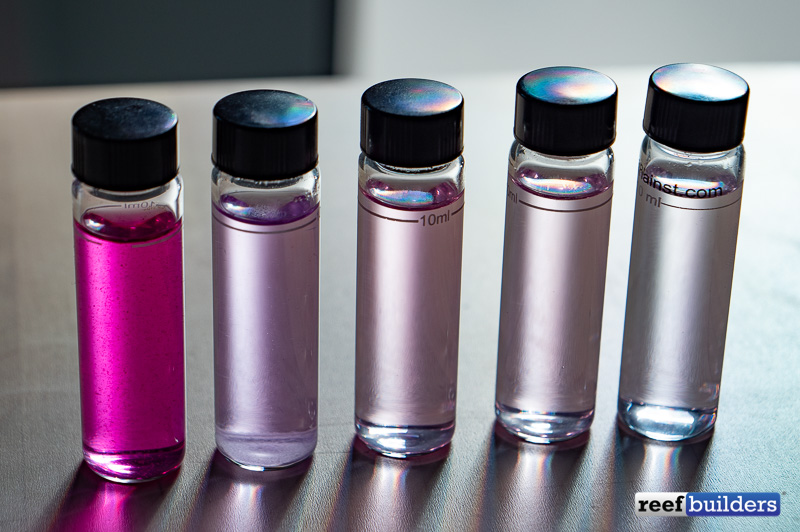
Measuring calcium and alkalinity through color-changing titration test kits is well accepted, but can be tricky depending on your lighting or color vision. For these reef aquarium chemistry values, the Hanna Checkers are only a little more difficult to use but offer much greater precision and repeatability.
Conversely, aquarium nitrate tests are all over the map – we seriously have tried them all and they rarely give repeatable results, not to mention zero kind of resolution in the low end. However ‘easy-to-use’ these aquarium test kits may be for dubious values, the Hanna Nitrate Checker isn’t hard to use, but it does take time and more steps than more saltwater and reef aquarists are accustomed to performing.
Most reef aquarium chemistry sets will be best served by having both a quick and easy nitrate test kit that only gives a rough idea of what nitrate levels are, as well as the Hanna Nitrate Checker for better understanding on the rate of nitrate buildup or consumption. The aquarium hobby has never had access to this level of nitrate testing, not even from ICP tests, so it’s still too early to know what we will learn once more people get the Hanna Nitrate Checker in their possession, but we’ve already confirmed that we have a lot more headroom to be feeding the fish and corals in our own reef aquarium systems.


